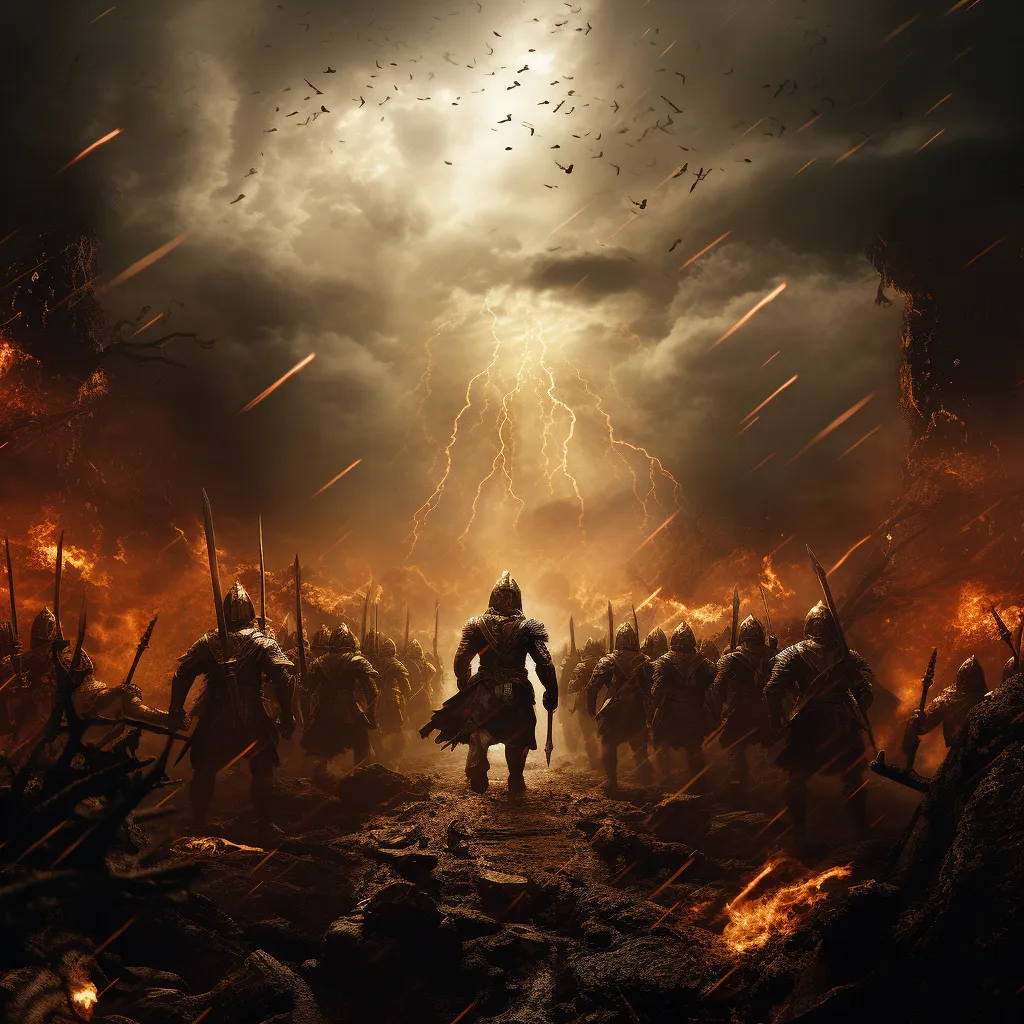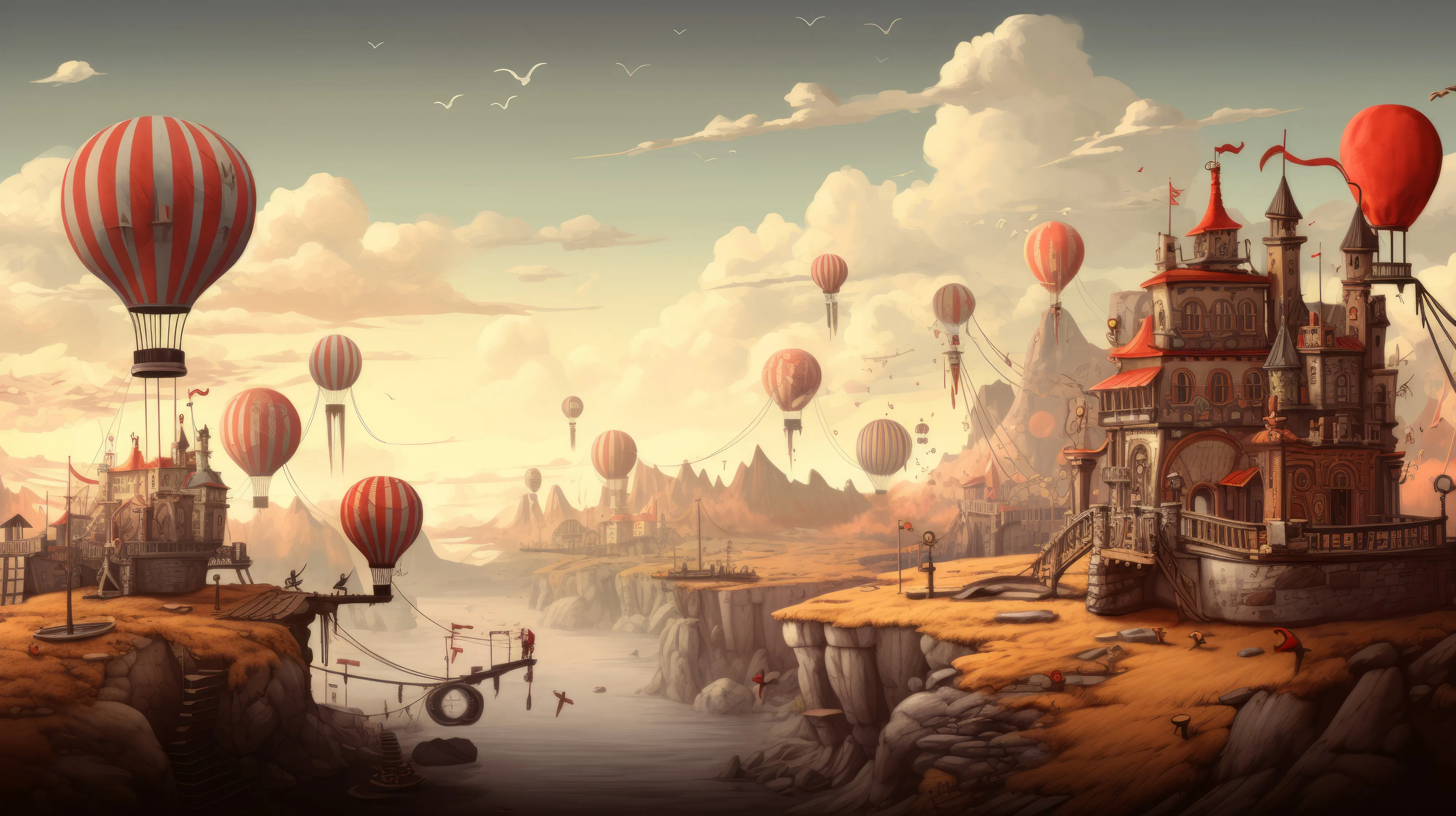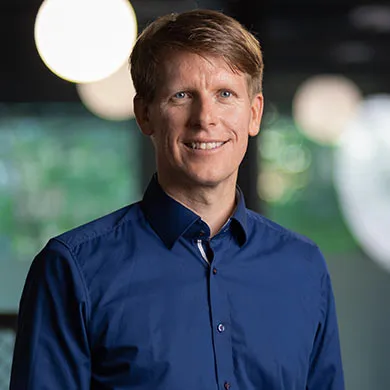This is the ultimate table with all the prompts/commands you need to create stunning images in Midjourney . This table is also constantly updated, as new prompts are usually added after a major version update. One thing I can tell you from experience: only with the right commands will you get the image you have in your head much faster. So let's start with our prompt list for Midjourney:
All commands at a glance
| Command | Meaning |
| --ar --aspect | Image format - default is square: --ar 1:1 Portrait format: 4:5 or 4:7 (the higher the number on the right, the higher the image) Landscape format: 3:2 or 7:3 (the higher the number on the left, the wider the image) |
| --h --w | Up to version 3 of Midjourney, for example, you could use --h 600 --w 1200 to create an image with a height of 600 pixels and a width of 1200 pixels. |
| --creative | By adding --creative, you can make Midjourney output unique, even more unusual images. For example, this results in a more vibrant color palette or a more abstract design. Important: To use the tag, you must also add --test. Example: portrait of a young girl --test --creative |
| --c --choas | Chaos command - the higher the number, the more abstract the result. 0 to 100 is possible, for example: --c 50 |
| ::X | X determines the weighting of a word. For example, if I want bear to have the highest weighting: /imagine bear::4 in the forest::2 hare::1 Negative weightings are possible: /imagine bear::-1 in forest::2 hare::-5 (they basically correspond to the parameter --no) |
| :: | Use the double colon to clearly separate individual words of terms from each other, for example in Hot:: Dog - written like this, the delicious food hot dog becomes a hot dog. |
| --v | Not all commands work in all versions (e.g. --h and --w). If you want to use commands from certain versions, put the version number at the end of your prompt in this form: --v 3 |
| --q --quality | The default is 1, but often a less detailed creation is sufficient and is faster and cheaper with --q 0.5 or 0.25 because less computing power is required. |
| --s --stylize | The higher the value, the more artistic the image will look and may therefore deviate more from your specification. For example, --s 10 is less artistic than --s 1000. The standard is 100. |
| --no | This allows you to define what should not appear in the image under any circumstances. Example: --no trees |
| --seed | A technical parameter that gives Midjourney an initial value for image creation. This is usually assigned randomly. If you want to achieve similar results for several of your images, you should use the same seed with --seed. Numbers between 0 and 4294967295 are possible. |
| --video | Saves the creation process of the image as a video |
| --tile | Creates seamless tileable images/textures (only from Midjourney version 5) |
| /prefer remix | Select remix mode to change the prompts, parameters, model versions or aspect ratios between variations. Remix takes the general composition of your source image and uses it as part of the new job. |
| {} | You can create multiple variations at once. For example, 3 images are generated with: portrait of a {3 years, 4 years, 5 years} old girl |
| /imagine | Command to create images |
| /describe | You give Midjourney a picture of your own. The AI in turn gives you four prompts that describe the picture. |
| /Blender | You can use this to blend two images into one. |
| /prefer option set | Create or manage your own option - very practical to avoid constantly entering long command options. For example, if you always want the photo style national geographic in 7:5 format, then create this once with: /prefer option set tutkit national geographic --ar 7:5 Important: You can replace the word tutkit with your own word (this is the name of your new option). Then click on value with the mouse so that the option is accepted. To apply the option you have created, simply enter its name, like this: --tutkit |
| /prefer option list | Displays all self-defined options. |
| /prefer suffix | This allows you to define a suffix that is automatically appended to each of your subsequent entries. For example, if you enter /prefer suffix --video, --video will be automatically added to your next entries. To delete the suffix again, enter the command once without values, i.e. only: /prefer suffix |
| /prefer auto_dm | All results will be sent to you as a direct private message (only available in the subscription). |
| /relax | Switches to relax mode (i.e. images take longer to be created). This is only possible in the medium and most expensive subscription model and is important, for example, to save computing time for fast mode. |
| /prefer remix | Switches to remix mode, which can be used to directly edit and change entries for images that have already been created. |
| /settings | Display and adjust the settings of the mid-journey bot |
| /fast | Switches from Relax mode to Fast mode, which is only available to a limited extent in the model variants. |
| /subscribe | Creates a personal link to your account to view or edit your subscription |
| /info | Displays information about your account - e.g. how much computing time you have left this month - and all pending or current orders. |
| /help | Quickly displays important links for help. |

Styles for Midjourney that you can use in your prompts
Here's a list of styles you can use for your midjourney prompts. The style list for Midjourney is not exhaustive, but gives you a wide range of options to define your image look. If you need more and are not sure exactly which style Modjourney needs, use the /describe command to upload an image in the style you are looking for and see how Midjourney itself defines your uploaded image.
- 2D illustration (2D illustration)
- African (african)
- Airbrush (airbrush)
- Analog film photography (analog film photography)
- Anime portrait (anime portrait)
- Ancient Greece (ancient greece)
- Banksy (banksy)
- Cartoon (cartoon)
- Cyberpunk (cyberpunk)
- Digital film photography
- Double exposure
- Dark fantasy (dark fantasy)
- Monochromatic
- Ice carving
- Cinematic
- Futuristic style (futuristic style)
- Graffiti (graffiti)
- Graphite (graphite)
- Halftone
- Illustrator (illustrator)
- Impressionism
- Infographic drawing (infographic drawing)
- Japanese ink (Japanese ink)
- Calligraphy (calligraphy)
- Caricature
- Kohler (charcoal)
- Chalk (chalk)
- Low poly (low poly)
- Magazine photography
- Coloring book (coloring book)
- Manga (manga)
- Marble (marble)
- Marvel comics (marvel comics)
- Minimalistic (minimalistic)
- National Geographic (national geographic)
- Neon (neon)
- Oil painting
- Origami (origami)
- Pastel drawing
- Patchwork collage (patchwork collage)
- Pictogram (pictogram)
- Brush strokes
- Pixar (pixar)
- Pixel art (pixel art)
- Polaroid photo
- Pop Art (pop art)
- Porcelain (porcelain)
- Rembrandt (rembrandt)
- Renaissance (renaissance)
- iridescent (iridescent)
- Sketch (sketch)
- Sculpture
- Splatter (splatter)
- Spray paint
- Line drawing
- Surrealism
- Tattoo art
- Technical drawing
- Ink drawing
- Typography art
- Ukiyo-e art (ukiyo-e art)
- Ultrarealistic
- Watercolor ornaments (ornamental watercolour)
Do you already like the tips? Then you will certainly like my training on Midjourney. Take a look at it now.

